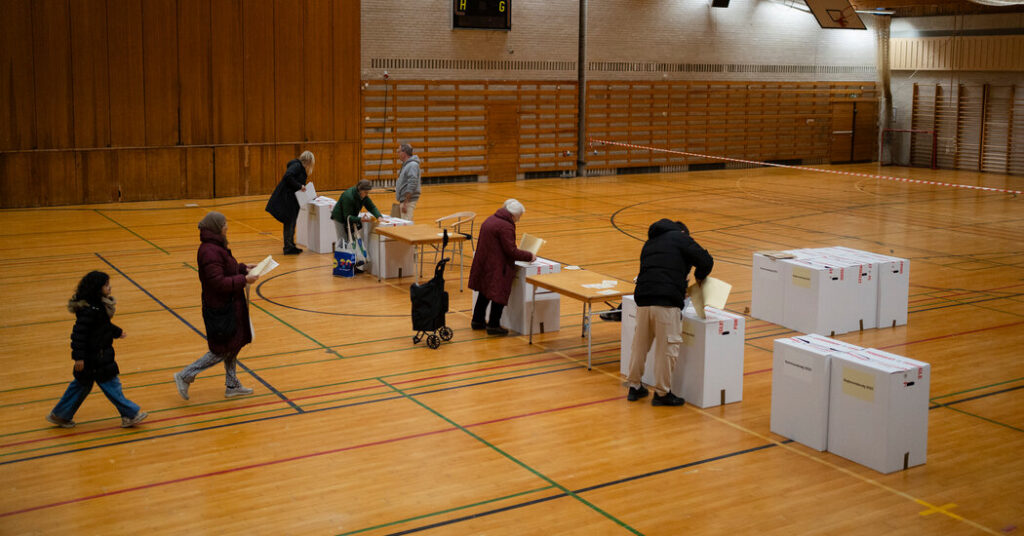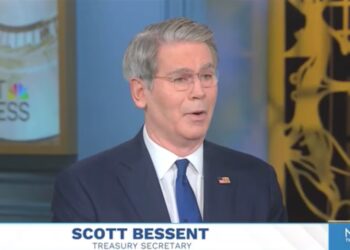Britain’s government is joining the rest of Europe in taking a stricter stance on asylum, turning to the nation that has become something of a migration role model: Denmark.
Right-wing parties across Europe have sought for years to limit migration, often arguing that too many migrants could overwhelm public services and fracture social cohesion. Denmark stands out, though, because here it was a center-left government that doubled down on strict rules. Asylum flows have steadily fallen, and the Danish Social Democrats have retained national power.
But as Keir Starmer’s Labour government in London takes notes, unveiling a plan last week that openly borrows elements of Denmark’s policy, the way the Danish approach has worked on the ground offers reasons to proceed carefully. The political gains that the approach seemed to offer now show some signs of cracking, and policies meant to limit the entry of asylum seekers may come at a social cost.
Lars Lokke Rasmussen, the moderate politician who was prime minister when Denmark adopted many of its strictest policies, said immigration policy was about both limiting big flows of potential refugees and welcoming needed foreigners.
“They should just recall that we need this balanced approach,” said Mr. Rasmussen, who is now the Danish foreign minister. “It’s not black and white. It’s a colorful world, and it comes with a lot of nuances.”
‘Unwelcoming Country’
Over the years, but especially since the Syrian refugee crisis of 2015 sent a flood of newcomers into Europe, the Danish government has enacted policies to make life challenging for asylum seekers, trying to discourage them from coming.
Danish officials say the nation wants to slow the flow of new asylum seekers so it can adjudicate their cases carefully, and thoroughly integrate the people whom it does accept, even as it still takes a large number of documented migrants. The point, they say, is to avoid pressures that rapid migration has put on other societies, including homelessness, while maintaining public support in a society with high taxes and generous welfare policies.
Copenhagen pioneered a number of policies that Britain hopes to emulate. Some were largely symbolic, like threatening to confiscate the jewelry and valuables of would-be refugees to pay for their expenses. It also has made the process to gain permanent residence longer and subject to review. And it houses would-be refugees in conditions that it hopes discourages them from remaining.
That’s the case at Avnstrup return center, a former sanitarium filled with sparse, dormitory-like rooms in the countryside about an hour outside of Copenhagen. The Danish government sends some asylum seekers there, including people who are waiting on decisions and others who have been rejected but who cannot be returned to their home countries.
Ayfer Tepe, 52 and from Turkey, has lived in limbo at the Avnstrup center since 2019, when Denmark first rejected her asylum application. She has no money and no permission to work, and must check in twice a day. She compares it to life in an open-air jail.
Still, she has no intention of leaving. She said she fears the police in Turkey, where her ex-husband, a left-wing political activist, ran into trouble with the law and where the authorities repeatedly visited her house. And her 15-year-old son has largely grown up in Denmark, so she worries he would no longer fit in back in her home country.
“Where would I go?” she said from a worn couch in the center’s cafe, where residents and volunteers had gathered for coffee and cake on a clammy November afternoon.
Ms. Tepe’s case illustrates that no matter how discouraging governments may be to asylum seekers, there are still likely to be desperate people who will not return to their native countries.
Some human rights experts argue that even as governments make asylum processes more difficult, people in danger will still seek refuge, but they will be caught in worse conditions.
It is a “race to the bottom,” said Michala Clante Bendixen, who runs the refugee advisory group Refugees Welcome Denmark, which creates a “constant atmosphere of stress and insecurity.”
And migration researchers say the policies could have a long-run social cost, making even legal migrants and their descendants feel unwanted in Danish society.
“We’ve really branded ourselves as a more unwelcoming country,” said Thomas Gammeltoft-Hansen, a professor of migration law at the University of Copenhagen.
‘Open and Closed at the Same Time’
Denmark is not alone in restricting asylum. The Biden administration progressively tightened American rules over its time in office and in some cases went further, turning away potential asylum seekers at the U.S.-Mexico border. And countries across Europe are becoming steadily stricter about who enters and stays.
But Denmark’s tough stance on asylum came early. Its policies began to tighten notably after 2015 and continued after 2019, when Mette Frederiksen, the prime minister, came into office. At the time, the policies made her Social Democrats an outlier on the left.
Mr. Rasmussen, the prime minister who oversaw the early shift toward a stricter approach, pointed out that Denmark still welcomes many legal migrants. But, he added, with its high taxes and generous welfare state, it also needed to limit asylum flows.
“If we can’t solve that dilemma, being open and closed at the same time, then we will lose our people’s support,” he said.
The Danish approach seemed to work. Denmark has not experienced some of the acute migration-related strains of nearby nations like Germany, Sweden and Belgium. In 2015, about 21,000 people sought asylum in Denmark, with the largest numbers coming from Syria and Eritrea. That figure fell to just over 2,000 last year, based on Eurostat data.
Asylum numbers have dropped across Europe, making it hard to say exactly how much of it owes to Danish policy. Still, today Denmark ranks toward the bottom of the pack in applications among the European Union’s 27 nations.
The approach also seemed to pay political dividends. As far-right European parties rose in response to concerns about migration, Ms. Frederiksen retained power.
Political Warning Sign
Yet last week’s municipal elections raised questions about whether that boost from migration policy will continue next year, when Social Democrats face a national election. Ms. Frederiksen’s party performed badly on Tuesday, losing control of Copenhagen for the first time in more than 100 years as voters shifted further to the left.
While local issues like parking and housing costs were at play, the way the government talks about migration was also on the minds of some voters.
Frederik Just, 25, exiting his polling place last week, said that his political views aligned well with his local Social Democrat candidate but that still he voted for a different party. Migration policy informed his decision, he said. He had recently seen a TikTok clip of Ms. Frederiksen talking about foreigners.
“To me, it sounded racist,” he said.
Adama Camara, 34, formerly voted Social Democrat. But he, too, opted for another party on the left this time, and migration factored into his decision: He called the government’s positions “fear-mongering.”
Denmark has also faced legal pushback for its policies. A so-called ghetto law allowed the government to cut public housing in struggling neighborhoods where more than half of residents come from “non-Western” backgrounds. Earlier this year, a senior adviser at the European Union’s top court found that to be ethnic discrimination.
Even Mr. Rasmussen, who helped forge the policies, suggested that not all worked well. The jewelry confiscation law enacted while he was prime minister, for instance, was widely criticized in the global press, painting Denmark as hostile to migrants, and it was rarely used.
“It sent a problematic signal,” he said.
He said the goal should be to remain open to legal newcomers who can help fuel the aging population and economic growth, and to migrants who truly need asylum.
Shaho Piroty, 27,- who fled Iran this year with his wife and his 1-year-old son, came despite the discouraging signals Denmark has been sending. The smuggler who helped Mr. Piroty gain fake visas to enter Europe warned him against Scandinavia, saying the policies would be too restrictive.
But Mr. Piroty, who said he feared arrest and execution because of his political activism in Iran, saw Denmark as the kind of strong democracy he was craving after years of oppression. Now, he and his family are in the Avnstrup center, awaiting a decision on their case.
He said he could see the logic behind the tough policies and living conditions, which he said might help weed out people who don’t truly need refuge.
“They have to protect their society and culture,” said Mr. Piroty, who is already progressing in both Danish and English as he tries to acclimate. “I understand that.”
Maya Tekeli contributed reporting.
Jeanna Smialek is the Brussels bureau chief for The Times.
The post Denmark Offers Lessons as Europe Toughens Up on Immigration appeared first on New York Times.




